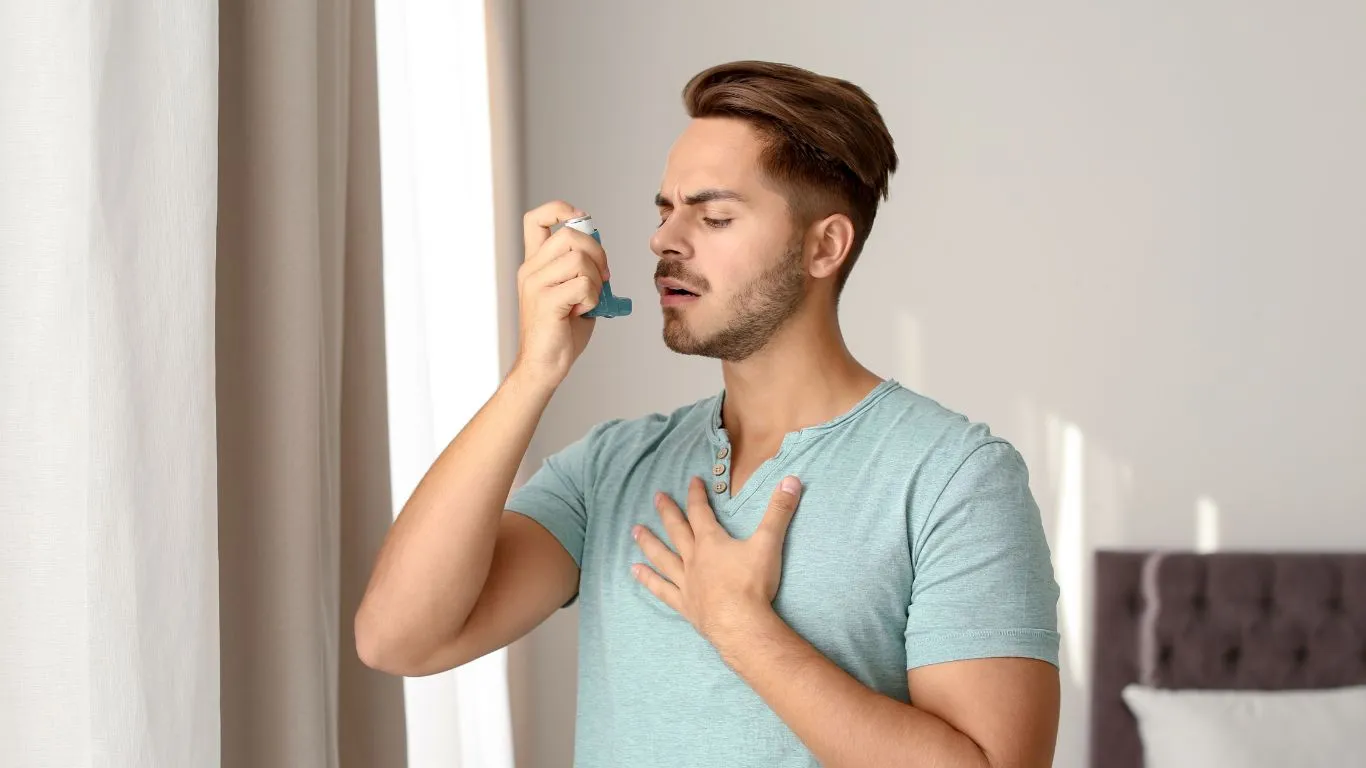Stop Asthma Flare Ups During Allergy Season with These Powerful Tips
Asthma flare ups during allergy season are no joke—especially when you’re juggling high pollen counts, rising humidity, and unpredictable triggers. As a pulmonary nurse practitioner, I’ve seen firsthand how allergy season can completely derail someone’s asthma control plan. I’ve had patients who were stable for months suddenly end up wheezing, coughing, and struggling just to get a deep breath in—all because tree pollen hit a new high or they forgot their antihistamines one day. So in this article, let’s break down what’s really going on during allergy season, why asthma symptoms get worse, and what you can do (based on real experience, not just textbook stuff) to stay ahead of it.
Why Asthma Gets Worse During Allergy Season

It’s Not Just Allergies—It’s the Combo Effect
One of the biggest misconceptions I see is that people think asthma and allergies are totally separate. Nope. If you’ve got allergic asthma (which a lot of folks do), then seasonal allergens like pollen, mold, and grass can send your airways into full-on drama mode. Your body reacts like it’s under attack—and your lungs get caught in the crossfire.
So what’s happening exactly? When you breathe in something like pollen, your immune system responds with inflammation. That inflammation makes your airway muscles tighten up and your mucus production go into overdrive. The result? Shortness of breath, chest tightness, wheezing… the whole flare-up package.
Real Talk: What I See Every Spring
I always know allergy season is in full swing when my clinic fills up with patients who were totally fine a month ago. It’s the same story:
- “I forgot to start my allergy meds early.”
- “I thought my asthma was under control, but now I can’t even walk the dog.”
- “I didn’t realize pollen could be this bad.”
Trust me, it sneaks up on even the most well-managed patients. One of my long-time patients, a teacher who runs every morning, ended up in urgent care because she didn’t realize how fast tree pollen levels had spiked. Her rescue inhaler wasn’t cutting it anymore. Once we tweaked her maintenance meds and added a daily antihistamine, she bounced back—but it was a wake-up call.
Common Triggers That Set Off Asthma Flare Ups During Allergy Season

Outdoor Allergens That Wreak Havoc
Let’s break down the usual suspects:
- Pollen: Trees in early spring, grasses in late spring and summer, ragweed in the fall—each has its own “season of terror.”
- Mold: Damp leaves, compost piles, even mulch can harbor mold spores that are easy to inhale and hard to avoid.
- Air pollution: When pollen mixes with smog or ozone, it makes things even more irritating to your lungs.
And yes, these triggers love to gang up. You might be fine with just pollen, but toss in a little ozone or wildfire smoke and suddenly your asthma goes from manageable to mayhem.
Hidden Indoor Triggers Too
You might think staying indoors helps—and sometimes it does. But don’t forget about:
- Dust mites (especially when windows stay shut and ventilation drops)
- Pet dander (our furry friends can carry pollen inside too!)
- Household cleaners (some spray formulas are pretty harsh on inflamed airways)
Recognizing the Early Signs of an Asthma Flare-Up

Know Your Body’s Red Flags
One thing I always tell my patients: Don’t wait until you’re gasping for air to take action. There are subtle signs your asthma is stirring up trouble:
- Needing your rescue inhaler more than twice a week
- Nighttime coughing or waking up short of breath
- Feeling winded during simple tasks like walking upstairs
- Lower peak flow readings (if you’re tracking at home—more on that later)
The earlier you spot these, the easier it is to stop a full-on flare-up. I can’t tell you how many patients wish they’d listened to that first little wheeze.
Listen to the Patterns
Start paying attention to when your symptoms crop up. Is it always after yard work? Or when the air is especially humid? Keeping a symptom diary (or even just jotting notes in your phone) can help you—and your provider—spot trends before they become problems.
How to Prevent Asthma Flare Ups During Allergy Season

Get Ahead of the Game—Don’t Wait for Symptoms
One of the biggest game changers? Starting allergy and asthma treatments before the season begins. I always tell my patients: if you wait until you’re already sneezing or coughing, you’re already playing catch-up.
For example, I have a patient who gets clobbered by spring tree pollen every year. Now, we kick off her allergy meds and tweak her asthma controller dose in late February—before the first bloom hits. Ever since we started that, she’s stayed out of urgent care and actually enjoys the season again.
Here are a few solid ways to get ahead of asthma flare ups during allergy season:
- Start antihistamines early—at least 2-3 weeks before your usual symptoms kick in
- Keep your maintenance inhaler consistent (no skipping days even if you “feel fine”)
- Track pollen forecasts with an app or local weather station
- Close windows on high pollen days—yes, even if it’s nice outside!
Peak Flow Meters Are Your Secret Weapon
Listen, peak flow meters might not be glamorous, but they’re powerful. I always push my patients to use one, especially during allergy season. It’s an easy, objective way to see how your lungs are doing—before you even feel symptoms.
If your peak flow drops by more than 20% from your personal best, that’s your sign to take action. Don’t wait for the wheezing to get worse. That little meter can help you spot patterns and prevent full-on attacks.
Fine-Tuning Your Medication Strategy

Maintenance vs. Rescue—Use Them Right
I can’t count how many times someone has come into my clinic saying, “I use my rescue inhaler every day.” That’s a red flag. If you’re relying on your albuterol or other short-acting bronchodilator too often, your maintenance plan probably needs an upgrade.
Your daily controller inhaler (usually a corticosteroid) is the real MVP—it keeps the inflammation down, especially when allergens are doing their worst. If you’re not using it consistently, you’re basically letting the fire smolder until it bursts into flames.
Some meds I often see adjusted during allergy season:
- Inhaled corticosteroids (bumped up temporarily with provider approval)
- Leukotriene modifiers like montelukast—helpful for those who have both asthma and hay fever
- Antihistamines (daily oral options or nasal sprays like fluticasone)
- Biologics—for those with severe allergic asthma, these can be life-changing
Partner with Your Provider (Trust Me, We Want to Help)
This is where experience matters. As a pulmonary NP, I want my patients to reach out the moment things feel “off.” Don’t tough it out. We can adjust your medications, add a nasal spray, even test for new allergens if needed.
One patient of mine—mid-30s, works outdoors—thought he was just “getting older” because he was short of breath more often. Turned out, he developed a new allergy to grass pollen. We adjusted his meds and suggested some easy lifestyle tweaks. Within a week, he was back to hiking without gasping for air.
Creating an Asthma Action Plan That Works in the Real World

Your Personalized Roadmap
Everyone with asthma needs an action plan—period. And it can’t just live in a drawer somewhere. It should be something you understand and actually use.
What goes into a great asthma action plan?
- Your daily meds—and when to adjust them
- Your peak flow target zones (green, yellow, red)
- Clear steps to take during flare-ups
- Emergency contact info
- When to call your provider or head to urgent care
Make It Work for You
If your current plan feels like it was written for someone else—it probably was. Customize it. Add reminders on your phone. Stick it on your fridge. Share it with your spouse or kids. I once helped a high school student laminate hers and keep it in her backpack. Simple, but so effective.
When patients follow a plan that’s tailored to their lifestyle, they avoid panic and know what to do before things get scary. That’s empowering—and safer.
When Allergy Shots or Biologics Make Sense
If you’ve tried all the usual strategies and you’re still struggling every allergy season, you might need to go deeper. Allergy immunotherapy (a.k.a. allergy shots or tablets) can help desensitize your immune system over time. And for people with moderate-to-severe allergic asthma, biologics like omalizumab can significantly reduce flare-ups.
I’ve seen patients go from monthly urgent care visits to zero hospital trips in a year thanks to biologics. It’s not for everyone, but if you’re stuck in a flare-up loop, talk to your provider about whether it’s time to explore that route.
Simple Lifestyle Tweaks to Manage Asthma Flare Ups During Allergy Season

Control What You Can Inside Your Home
Look, you can’t change the pollen count outside, but you can create a safe, breathable zone inside your home. I’ve had plenty of patients roll their eyes at this part—until they actually try it and notice they’re waking up with clearer lungs and fewer symptoms.
Here are a few things I always recommend to reduce indoor allergens that trigger asthma:
- Use a HEPA filter in your bedroom—this is non-negotiable during allergy season
- Vacuum with a HEPA-filter vacuum at least twice a week (especially if you’ve got pets)
- Shower and change clothes after coming inside—pollen clings to fabric and hair
- Keep windows closed when pollen counts are high, even if the weather’s beautiful
- Wash bedding weekly in hot water to kill dust mites and wash away pollen
I had a college student who kept having nighttime flare-ups until we figured out her dorm window—left open for “fresh air”—was letting in a ton of pollen. She started using a small air purifier and kept that window shut. Problem solved.
Don’t Underestimate Pet Dander and Pollen Transfer
As much as we love our fur babies, pets can unknowingly carry allergens inside. I always say: love the dog, but wipe the paws. Seriously. Pet fur collects pollen like a magnet. Wiping them down after walks and keeping pets off the bed during allergy season can make a huge difference.
And if you have a cat? Brushing them regularly and using air purifiers in the areas they frequent helps too. You don’t have to rehome your pets—you just have to tweak your routine a bit.
Outside-the-Box Tips That Actually Work

Plan Outdoor Time Strategically
I always tell patients to treat pollen like they would bad weather—check the forecast and plan around it. There are plenty of apps (like the one from Health.com or NIH) that show daily pollen levels by zip code.
Here’s what I usually recommend:
- Exercise early morning or late evening—pollen is often lowest then
- Wear sunglasses and a hat to keep pollen off your face and hair
- Rinse your nasal passages with a saline spray after being outside
- Use a mask when doing yard work (I personally love the N95s for this!)
One of my patients is a morning runner with asthma, and just shifting her run an hour earlier—plus wearing wraparound sunglasses—cut her springtime flare-ups in half. It doesn’t have to be complicated to work.
Breathing Exercises and Mindful Routines
This might sound a little “woo,” but trust me—mindful breathing techniques can actually help improve lung control. I like to show patients simple diaphragmatic breathing or pursed-lip breathing to help them recover faster during a flare-up.
Also, managing stress plays a role. High stress can trigger hyperventilation, which spirals into shortness of breath. I often suggest my patients try light yoga, guided breathing apps, or even just 5 minutes of quiet time in the morning with deep breathing. It helps regulate both your mind and your lungs.
Teaching Others How to Help You
One thing that gets overlooked? Making sure the people around you know how to help if you’re having a flare-up. That includes family, coworkers, teachers, and friends.
I worked with a mom of a 10-year-old boy who had asthma and severe seasonal allergies. We created a simple, visual “asthma alert” card with color zones and steps for the school nurse. That card helped the school catch a flare-up early and prevent an ER visit. Empowering others to act quickly is part of protecting yourself.
When to See a Specialist
If you’re doing everything “right” and still dealing with frequent asthma flare ups during allergy season, it may be time to consult with a specialist. An allergist or pulmonologist can run more advanced tests, look at your treatment history, and recommend next steps like allergy immunotherapy or personalized medication plans.
I always say—don’t settle for “good enough” asthma control. You deserve to breathe easy, no matter the season.
References
- NIH
- Health.com
- CDC
- AAFA (Asthma and Allergy Foundation of America)
Disclaimer
This blog is for informational purposes only and is not intended as medical advice. Always consult your healthcare provider or asthma specialist before making any changes to your treatment plan. While I am a licensed pulmonary nurse practitioner, this article is meant to share insights and educational tips—not to replace individualized medical care.

Bianca Nala is a compassionate Nurse Practitioner with a strong background in primary and respiratory care. As a health writer for Healthusias.com, she combines her clinical expertise with a talent for clear, relatable storytelling to help readers better understand their health. Bianca focuses on topics like asthma, COPD, chronic cough, and overall lung health, aiming to simplify complex medical topics without losing accuracy. Whether she’s treating patients or writing articles, Bianca is driven by a single goal: making quality healthcare knowledge accessible to everyone.






